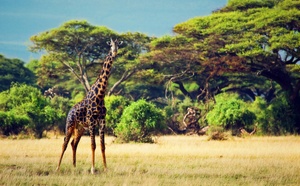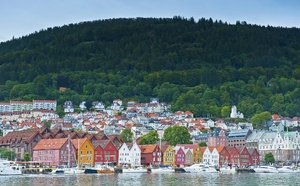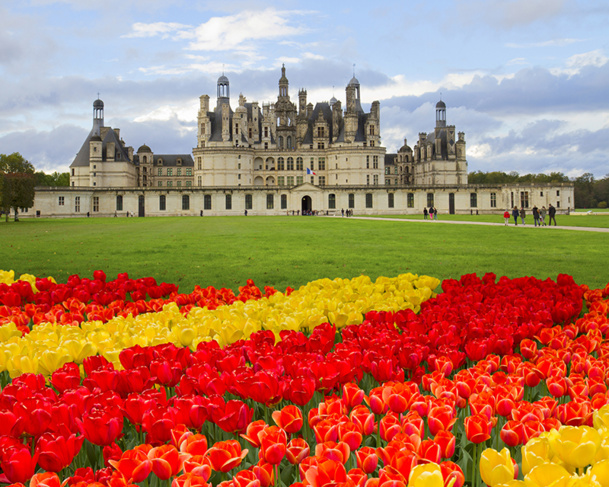
“A few miles from Blois… between muddy swamps and an oak tree forest, far from the roads, we come face to face with a royal and rather magical castle.” This is Chambord seen by Alfred de Vigny © neirfy - Fotolia.com
Property of Catherine de Medicis, then owned by Diane de Poitiers, the Domaine de Chaumont reached its peak at the end of the 19th century through the grace of the De Broglie.
Every year, the international gardens festival takes place in the castle’s parks.
For the 23rd edition, the theme will be “Gardens and the Cardinal Sins.” With a hefty program ahead.
We’ll shift from pride to sloth to lust passing through - without greed - gluttony…
Around thirty creators (chosen from 300 candidates) have worked on the “garden of sins”, “the dissection of the garden of Eden”, the “chick’s garden”, and many more.
Startling to say the least, these creations are the works of landscape architects, architects, fine artists but also amongst them, an anthropologist or a palynologist…
These designers will keep these garden alive until the end of Fall for the enjoyment of around 500,000 expected visitors.
Plan half a day for the visit and a whole day if you want to include the castle. (Rate is €11 for the garden festival, and €16 for the castle, discounts for groups and children.)
Every year, the international gardens festival takes place in the castle’s parks.
For the 23rd edition, the theme will be “Gardens and the Cardinal Sins.” With a hefty program ahead.
We’ll shift from pride to sloth to lust passing through - without greed - gluttony…
Around thirty creators (chosen from 300 candidates) have worked on the “garden of sins”, “the dissection of the garden of Eden”, the “chick’s garden”, and many more.
Startling to say the least, these creations are the works of landscape architects, architects, fine artists but also amongst them, an anthropologist or a palynologist…
These designers will keep these garden alive until the end of Fall for the enjoyment of around 500,000 expected visitors.
Plan half a day for the visit and a whole day if you want to include the castle. (Rate is €11 for the garden festival, and €16 for the castle, discounts for groups and children.)
Chambord: a life-sized royal dream
Autres articles
-
 Travel Europe: England and Scotland new targets for 2016
Travel Europe: England and Scotland new targets for 2016
-
 Travel Europe : l'Angleterre et l'Ecosse en ligne de mire en 2016
Travel Europe : l'Angleterre et l'Ecosse en ligne de mire en 2016
-
 The truffle is celebrated in Sarlat, medieval city and the capital of the Périgord Noir!
The truffle is celebrated in Sarlat, medieval city and the capital of the Périgord Noir!
-
 Norio, the robot guide of the Oiron Castle
Norio, the robot guide of the Oiron Castle
-
 The Museum of Mankind (Musée de l’Homme) will open in October 2015
The Museum of Mankind (Musée de l’Homme) will open in October 2015
Chambord is the biggest and most impressive of the Loire Castles: 32 km of walls circle 5,500 acres of forest.
Six doors open to six tree-lined avenues that lead to 430 rooms, 300 fireplaces, 75 staircases including the main spiral and double revolution staircase.
Two people can climb up at the same time on their own, they can see one another through the dormers without ever running into each other. This is the signature piece and the castle’s main attraction.
Outside, the promenade by the body of water has reopened to the general public since Spring.
Louis XIV was the first to define the layout of this large canal along the castle, but the construction was finished under the later reign of Louis XV.
Asked to be redesigned under the presidency of Pompidou in the early 1970s, it has not been well kept up since then, and the alleys have become non-walkable.
This large area at the east of the Castle provides, weather willing, a water mirror to the monument.
Thousands of visitors walk this 3.5 kilometers promenade every year, now rebuilt and embellished by the plantation of rows of flowers.
The goal is to provide visitors an educative tour amongst the preserved natural space as informational signs will be set up.
Four small wooden bridges will enable to explore one of the mythical landscapes of Chambord - its swamps - on which a reed bed grows.
All along the way, benches adorn the promenade, with two miradors from which visitors can maybe spot wild animals.
Six doors open to six tree-lined avenues that lead to 430 rooms, 300 fireplaces, 75 staircases including the main spiral and double revolution staircase.
Two people can climb up at the same time on their own, they can see one another through the dormers without ever running into each other. This is the signature piece and the castle’s main attraction.
Outside, the promenade by the body of water has reopened to the general public since Spring.
Louis XIV was the first to define the layout of this large canal along the castle, but the construction was finished under the later reign of Louis XV.
Asked to be redesigned under the presidency of Pompidou in the early 1970s, it has not been well kept up since then, and the alleys have become non-walkable.
This large area at the east of the Castle provides, weather willing, a water mirror to the monument.
Thousands of visitors walk this 3.5 kilometers promenade every year, now rebuilt and embellished by the plantation of rows of flowers.
The goal is to provide visitors an educative tour amongst the preserved natural space as informational signs will be set up.
Four small wooden bridges will enable to explore one of the mythical landscapes of Chambord - its swamps - on which a reed bed grows.
All along the way, benches adorn the promenade, with two miradors from which visitors can maybe spot wild animals.
Cheverny: the home base of Captain Haddock and Tintin
It’s the most traditional of the Loire Castles, magnificently furnished and probably the most vibrant.
For six centuries, it was always habited by the Hurault family which explains the sumptuous interior design compiled by successive generations.
But Cheverny is not only a heritage of stones and lands, it’s also one of hunting with hounds.
The castle still possesses a herd of a hundred dogs, along with Milou, Tintin’s dog, who stops by sometimes.
Hergé has in fact, discretely, drawn inspiration from the castle (without the wings) to create Capitain Haddock’s Moulinsart castle.
Tintin fans make a pilgrimage here to visit the permanent exhibit “The secrets of Moulinsart.”
As for the gardens, large straight-lined grass beds highlight the various trees planted in the 19th century: linden, sequoias, cedars… that border a never-ending alleyway.
A visit of the woods is possible by car and electric boats. Let's not forget the contemporary ornamental garden and vegetable garden; beautiful decorations that make the castle come alive.
Last but not least, dare enter the maze to get lost in!
For six centuries, it was always habited by the Hurault family which explains the sumptuous interior design compiled by successive generations.
But Cheverny is not only a heritage of stones and lands, it’s also one of hunting with hounds.
The castle still possesses a herd of a hundred dogs, along with Milou, Tintin’s dog, who stops by sometimes.
Hergé has in fact, discretely, drawn inspiration from the castle (without the wings) to create Capitain Haddock’s Moulinsart castle.
Tintin fans make a pilgrimage here to visit the permanent exhibit “The secrets of Moulinsart.”
As for the gardens, large straight-lined grass beds highlight the various trees planted in the 19th century: linden, sequoias, cedars… that border a never-ending alleyway.
A visit of the woods is possible by car and electric boats. Let's not forget the contemporary ornamental garden and vegetable garden; beautiful decorations that make the castle come alive.
Last but not least, dare enter the maze to get lost in!
The six gardens of Villandry
The last of the Loire Castles was not built during the Renaissance, Villandry wasn't a royal residence but that of Jean Le Breton, Finance Minister under François I.
This large familial home, heavily furnished, is inseparable from its gardens, that are true colorful vegetal masterpieces. They are the castle's hallmark.
The gardens are spaced out on successive terraces. At the lowest level is the first vegetable garden that is nevertheless superb due to its immediate proximity to the castle.
Made up of nine squares each with different patterns, it covers nine acres and is cropped twice a year.
At the middle level can be found the ornamented salons, meant to be outdoor hosting spaces as extensions of the castle’s living room.
At the third level stand the water garden designed to mirror the sun's reflection, and then the simple garden with medicinal, aromatic, and condiment plants. Finally, there’s the maze.
If we’re able to exit it, we’ll end up in the sun garden, the youngest of them all. A true space of dreams and escape that follows the general rules of the Villandry gardens and forms a cloister of bushes composed of three rooms.
This large familial home, heavily furnished, is inseparable from its gardens, that are true colorful vegetal masterpieces. They are the castle's hallmark.
The gardens are spaced out on successive terraces. At the lowest level is the first vegetable garden that is nevertheless superb due to its immediate proximity to the castle.
Made up of nine squares each with different patterns, it covers nine acres and is cropped twice a year.
At the middle level can be found the ornamented salons, meant to be outdoor hosting spaces as extensions of the castle’s living room.
At the third level stand the water garden designed to mirror the sun's reflection, and then the simple garden with medicinal, aromatic, and condiment plants. Finally, there’s the maze.
If we’re able to exit it, we’ll end up in the sun garden, the youngest of them all. A true space of dreams and escape that follows the general rules of the Villandry gardens and forms a cloister of bushes composed of three rooms.
Azay le Rideau: the enchanted mirror
In the middle of the Indre, the Azay-le-Rideau castle stands in the middle of a village between Tours and Chinon.
With its reflection from the water’s mirror, the castle is one of the Renaissance’s greatest successes, considered the icon of the new construction design during the 16th century in Val de Loire.
The castle towers in the middle of an exceptional landscape. A piece built in the 19th century, and the garden was listed as a historic monument in 1907.
Historical archives were consulted for its immaculate restoration.
The castle’s park reminds of its initial composition, adorned with beautiful trees and a background of hilly grasslands, surrounded by water mirrors.
In the summer, at nightfall, a tour allows to observe all the animals that come out in the obscurity.
Just like in “The Extraordinary Garden” by Charles Trenet, we’ll have surprising encounters: a talkative coachman, camels, geese and horses that walk on water, a river that hums the songs of carps, an equestrian puppet…
And a new addition, the castle now extends the tour by going through the attic to see the incredible 16th century oak roof frame, along with the patrol path and defensive system.
Highlights of the 2014 cultural season:
- September 27th at 8:30pm - A “Monuments in music” concert with members of the Paris orchestra
- Ravel: String Quartet and Hindemith: Quartet Quatuor n°1 (1914)
With its reflection from the water’s mirror, the castle is one of the Renaissance’s greatest successes, considered the icon of the new construction design during the 16th century in Val de Loire.
The castle towers in the middle of an exceptional landscape. A piece built in the 19th century, and the garden was listed as a historic monument in 1907.
Historical archives were consulted for its immaculate restoration.
The castle’s park reminds of its initial composition, adorned with beautiful trees and a background of hilly grasslands, surrounded by water mirrors.
In the summer, at nightfall, a tour allows to observe all the animals that come out in the obscurity.
Just like in “The Extraordinary Garden” by Charles Trenet, we’ll have surprising encounters: a talkative coachman, camels, geese and horses that walk on water, a river that hums the songs of carps, an equestrian puppet…
And a new addition, the castle now extends the tour by going through the attic to see the incredible 16th century oak roof frame, along with the patrol path and defensive system.
Highlights of the 2014 cultural season:
- September 27th at 8:30pm - A “Monuments in music” concert with members of the Paris orchestra
- Ravel: String Quartet and Hindemith: Quartet Quatuor n°1 (1914)
Château du Rivau, in the elves’ footsteps
Just around the corner from Chinon, stands the high silhouette of the Rivau Castle.
With its dungeon, turrets, drawbridge, it is a unique Val de Loire Renaissance castle.
A beautiful architectural mixture of the 15th and 16th centuries, carefully restored, the castle comes right out of a fairytale.
It is composed of a fortress, a large furnished noble residence, stables from the Renaissance, a press and 14 contemporary gardens.
These parks are listed as Outstanding Gardens and in the Conservatory of Scented Roses of France.
They contain over 400 varieties of roses and thousands of other plants. Each rose as an explicative sign with its vernacular and latin names.
To explore this fantastic world we’ll follow the footsteps of elves, ogres, giants, fairies, unusual animals.
They’ll take us to the Rivau gardens and their mysterious names: patch, lavender knots, Gargantua vegetable garden, enchanted forest, Tom Thumb’s path, Alice in Rivau Land, delicious border, the Cassinina, the scented alley, heaven’s orchard, love potion garden, the secret garden and that of the Raiponce princess.
For an afternoon, allow juvenile dreams to take over and explore in the company of fairies and elves a world of tales and legends.
With its dungeon, turrets, drawbridge, it is a unique Val de Loire Renaissance castle.
A beautiful architectural mixture of the 15th and 16th centuries, carefully restored, the castle comes right out of a fairytale.
It is composed of a fortress, a large furnished noble residence, stables from the Renaissance, a press and 14 contemporary gardens.
These parks are listed as Outstanding Gardens and in the Conservatory of Scented Roses of France.
They contain over 400 varieties of roses and thousands of other plants. Each rose as an explicative sign with its vernacular and latin names.
To explore this fantastic world we’ll follow the footsteps of elves, ogres, giants, fairies, unusual animals.
They’ll take us to the Rivau gardens and their mysterious names: patch, lavender knots, Gargantua vegetable garden, enchanted forest, Tom Thumb’s path, Alice in Rivau Land, delicious border, the Cassinina, the scented alley, heaven’s orchard, love potion garden, the secret garden and that of the Raiponce princess.
For an afternoon, allow juvenile dreams to take over and explore in the company of fairies and elves a world of tales and legends.














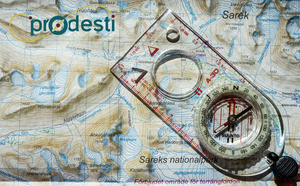





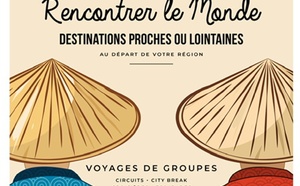



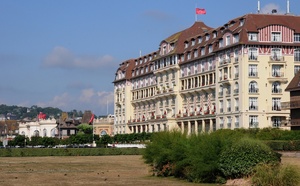
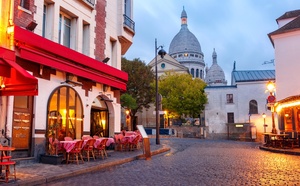
![Tourisme : où sont passés les Chinois ? [ABO] Tourisme : où sont passés les Chinois ? [ABO]](https://www.tourmag.com/photo/art/large_16_9/87929923-62307593.jpg?v=1744721842)
